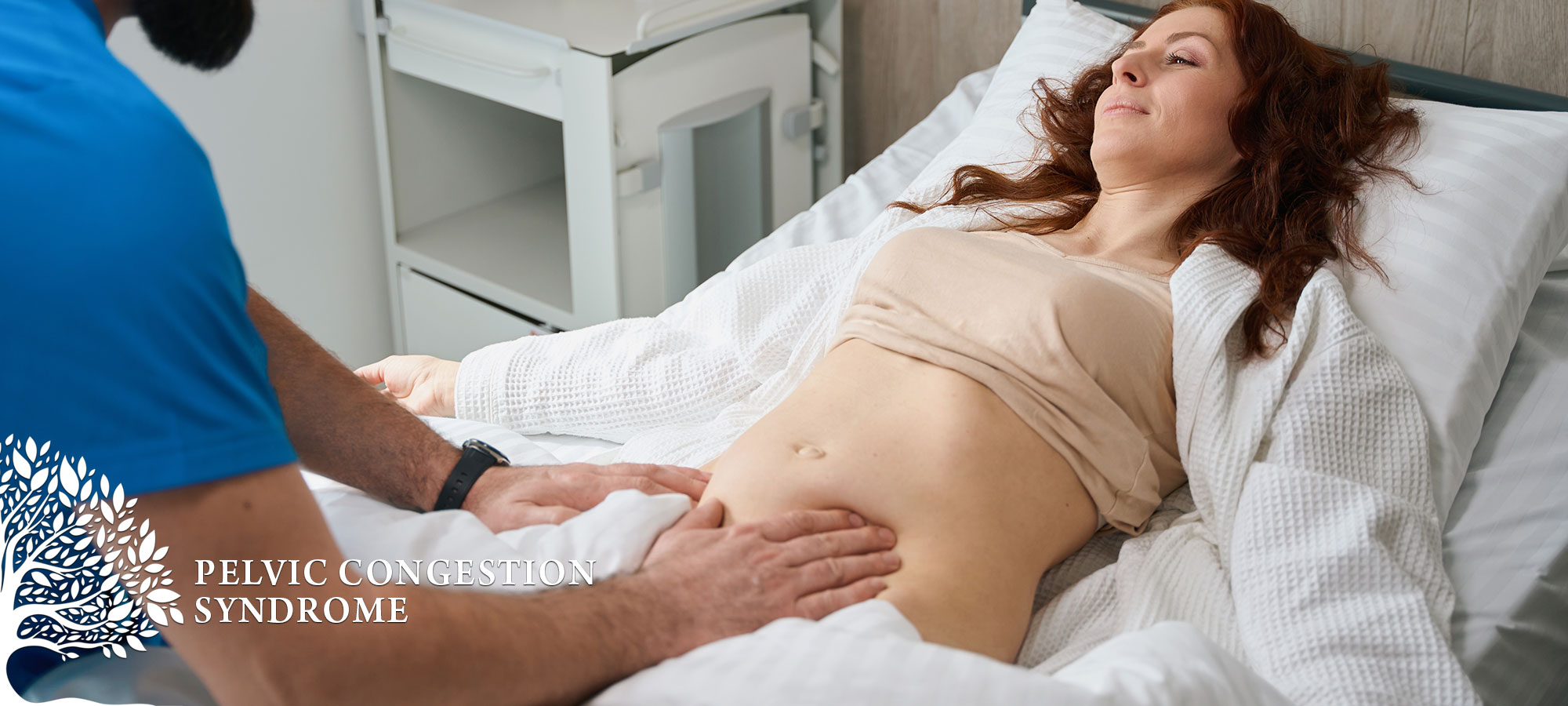
Pelvic Congestion Syndrome
Pelvic Congestion Syndrome (PCS) affects women by causing a persistent, dull pain in the pelvis, along with a sensation of pressure or heaviness in the groin. Often, PCS is linked to varicose veins developing in the lower abdomen, groin, and ovaries. This condition typically impacts women aged 20–45 who have had two or more pregnancies, but it can also occur in women with no pregnancy history.
Pelvic Congestion Syndrome Causes
PCS arises due to increased pressure in the pelvic veins. When blood fails to drain effectively from the pelvic region, it pools and raises venous pressure, resulting in chronic pelvic pain.

Pelvic Congestion Syndrome Risk Factors & Symptoms
Risk Factors
- Multiple pregnancies
- Multiple birth pregnancies
- Age
- Family history
- Obesity
Symptoms:
PCS can significantly affect a woman’s physical and mental well-being. Symptoms may include:
- Pelvic pain and pressure lasting more than six months
- Pain during the menstrual cycle
- Pelvic pain during or after intercourse
- A sense of fullness or pain in the pelvic, vaginal, labial, or perineal area
- Swelling in the vagina, labia, or perineum
- Varicose veins in the upper thigh, vagina, labia, or perineal region
- Frequent urination
- Incontinence
Pelvic Congestion Syndrome Diagnosis
Individuals showing any of the above symptoms might have PCS. Diagnosis generally involves:
• A thorough medical history and physical exam to exclude other conditions
• A transabdominal ultrasound to check for enlarged ovarian veins
• Intravascular ultrasound (IVUS) to evaluate blood flow within the vessels
• A venogram using contrast dye to identify abnormal flow in the ovarian veins
Pelvic Congestion Syndrome Treatment
Initial treatment often involves wearing compression hose or shorts to reduce pain and pressure. If this fails to provide relief, endovascular testing and therapy may be recommended. Under sedation, a venogram is performed to visualize pelvic veins. If the ovarian vein is found to be abnormally enlarged and leaking (reflux), embolization is carried out. This minimally invasive procedure involves placing a small metallic coil to close off the vein, easing pressure and pain. Key benefits of these outpatient endovascular procedures include:
• No overnight hospital stay—patients can return home the same day
• No incisions—only a needle puncture is made in the groin
• Minimal pain compared to open surgery
• Reduced risk of complications and scarring
• Significant improvement in chronic pelvic pain associated with PCS
Pelvic Congestion Syndrome Prevention
Although not all factors can be controlled, being aware of an elevated risk allows patients to take preventative steps:
• Wearing compression garments during pregnancy
• Maintaining a healthy body weight and BMI while pregnant
• Keeping a healthy BMI overall
• Regularly using compression hose
Pelvic Congestion Syndrome Progression
Chronic pelvic pain persisting for more than six months—often beginning during or after pregnancy—may indicate PCS, especially if it worsens over time.

Pelvic Congestion Syndrome FAQs:
Do hysterectomies solve Pelvic Congestion Syndrome?
Hysterectomies remove the periuterine veins, which are generally the veins responsible for PCS.
What does Pelvic Congestion Syndrome feel like?
Pain and pressure typically increase as time goes on. Patients often experience frequent bladder infections, painful intercourse, and painful periods.
How do you relieve pelvic congestion?
PCS is a chronic condition requiring medical confirmation and can be managed with endovascular procedures.
How common is Pelvic Congestion Syndrome?
PCS is frequently underdiagnosed and typically affects women aged 20–50 who have had multiple pregnancies. Approximately 15% of the U.S. population may be impacted.
